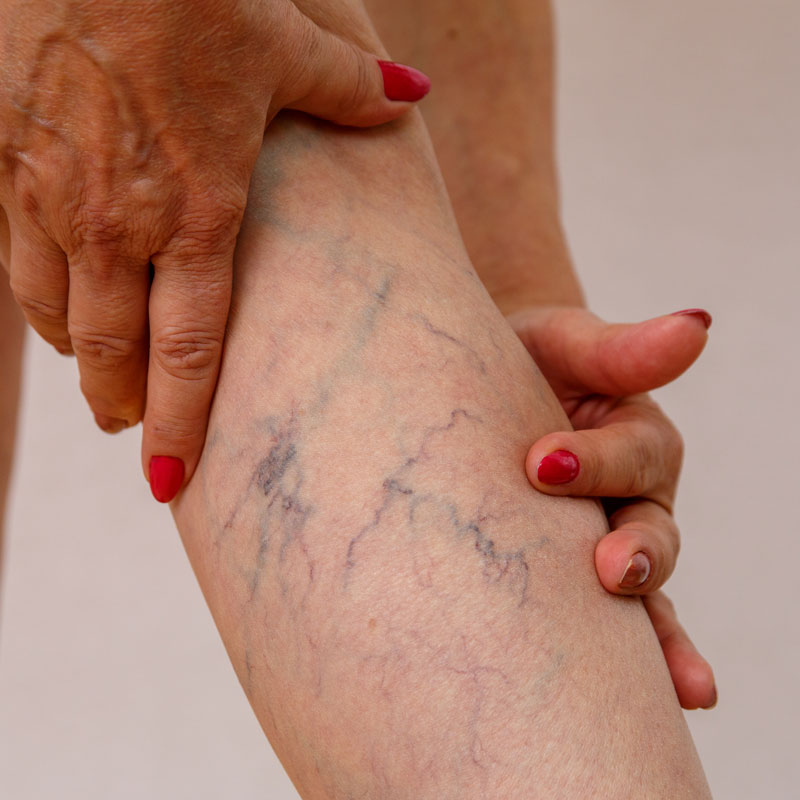Venous Insufficiency
Venous Insufficiency Treatment in Arizona
Venous insufficiency, also known as chronic venous insufficiency, is a condition in which the veins of the legs cannot adequately return blood to the heart. This happens when the valves in the veins become weak or damaged, allowing blood to flow backward and pool in the lower extremities. Over time, patients may notice discomfort, swelling, and changes in the skin. Arizona Vein and Laser Institute provides venous insufficiency treatment in Arizona. Although some venous insufficiencies may simply cause cosmetic deficiencies, others may be a sign of more severe health issues. Call us today!

What Is Venous Insufficiency?
Venous insufficiency is a general term used to describe when your veins are having trouble carrying blood back from your body to your heart. Normally, the valves in the veins prevent blood from flowing backward as it travels upward toward the heart. When these valves weaken or become damaged, blood can collect in the veins, causing them to enlarge and leading to a variety of symptoms. Chronic venous insufficiency is a long-term condition and can worsen if left untreated, impacting overall quality of life.
Key Causes of Venous Insufficiency
Venous insufficiency is usually caused by blood clots (deep vein thrombosis) and varicose veins. Several factors can contribute to the development of venous insufficiency, including:
- Prolonged standing or sitting
- Obesity
- Hormonal changes
- Genetics
- Aging
Venous Insufficiency Symptoms
Symptoms of venous insufficiency can vary in severity and may develop gradually. If any of these symptoms are present, it is crucial to consult a vein specialist for an accurate diagnosis and personalized treatment plan. Common signs of venous insufficiency include:
- Swelling in the lower legs and ankles, especially after prolonged periods of standing or sitting.
- Pain or aching in the legs, often described as a heavy or tired sensation.
- Varicose veins, which are swollen or twisted veins visible under the skin.
- Skin changes, including discoloration, thickening, or dryness, particularly around the ankles.
- Leg cramps or a burning, itching sensation in the affected areas.
- Slowly healing ulcers or sores on the legs, often occurring in severe cases of venous insufficiency.
Diagnosing Venous Insufficiency
To determine whether you have venous insufficiency, our medical team will first perform a physical examination and take a complete medical history. Under most circumstances, our medical team will order some imaging tests to pinpoint the source of the problem. These tests may include a Venogram, an X-ray procedure with contract material that shows blood flow in your veins. We may also perform a duplex ultrasound which is a test to see how blood moves through your arteries and veins. The test is done in the ultrasound or radiology department or in a peripheral vascular lab.
Venous Insufficiency Treatment Options
Fortunately, there are several effective treatments for venous insufficiency. The approach may depend on the severity of your symptoms and the underlying cause of the condition. Below, we explain the most common treatment options.
Lifestyle Changes
Adjustments in daily life can significantly impact managing venous insufficiency. Elevating your legs periodically, avoiding extended periods of immobility, maintaining a healthy weight, and engaging in regular exercise can all improve blood flow and reduce symptoms.
Minimally Invasive Procedures
Modern advancements in vein treatment have made it possible to address venous insufficiency without major surgery. Some common procedures include:
- Endovenous Ablation: A technique that uses laser or radiofrequency energy to heat and seal off damaged veins.
- Sclerotherapy: We inject a solution into the diseased vein, causing it to collapse and be reabsorbed by the body.
- Phlebectomy: A minor surgical procedure to remove varicose veins through small skin incisions.
Compression Therapy
Compression stockings are an essential first-line treatment for many people with venous insufficiency. These specialized garments gently pressure the legs, helping prevent swelling and blood from pooling.
Surgical Interventions
For severe cases that do not respond to other treatments, surgical options such as vein bypass or valve repair may be considered. These are typically reserved for advanced cases of venous insufficiency.
Preventing Venous Insufficiency
Prevention is a key role in reducing the risk of developing venous insufficiency or preventing the progression of existing symptoms. Simple measures such as staying active, avoiding prolonged periods of immobility, and taking care of your overall vascular health can make a significant difference. Wearing compression stockings during long flights or while standing for extended hours can also be beneficial.
Contact Arizona Vein and Laser Institute
Arizona Vein and Laser Institute customizes venous treatment to help optimize your health. If you’re experiencing symptoms of venous insufficiency, our team of highly trained vascular and cardiovascular surgeons is here for you. We’ll help you understand your vein problems and offer effective treatment options. Contact us today to schedule a consultation.
Customer Reviews
I really love Arizona Vein & Laser Institute. The staff there were friendly and professional. They were courteous, informative and gentle with their patients. I would highly recommend this institute.
Franny greeted me at the reception desk, and she was quite pleasant. Erica took me back for my ultrasound, and she explained everything she was looking for during my testing. Quite pleasant. And I saw the pa, rick. He took his time and answered all my questions and told me how he could help with different options for procedures. Quite a good experience all around. I will be going back for a procedure to relieve my pain. I highly recommend this office.
